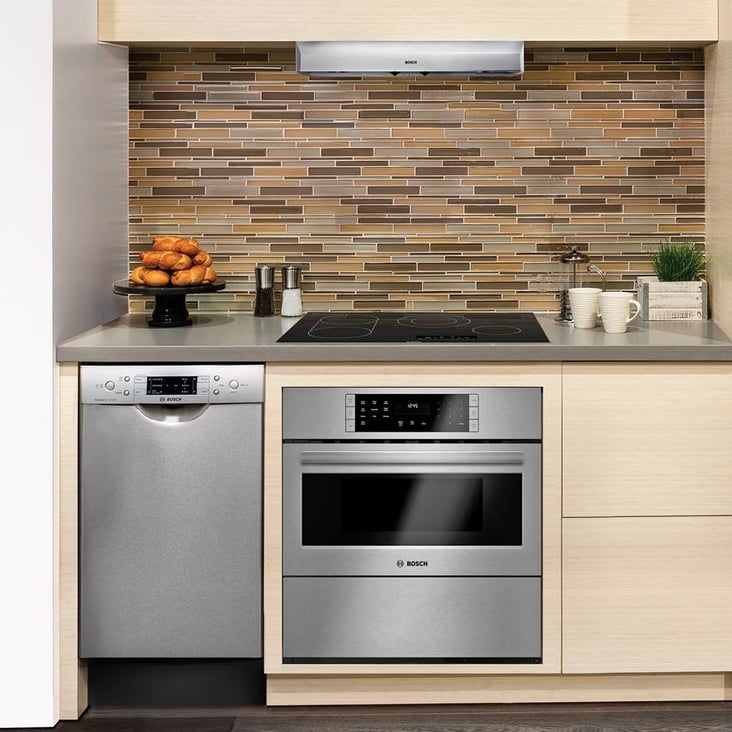This post is one in a series featuring the complete slate of advanced energy technologies outlined in the report This Is Advanced Energy.

Image courtesy of AEE member Bosch.
Efficient appliances and electronics reduce energy use while delivering the same or superior performance. Together, appliances and electronics comprise 28% of annual energy costs for the average U.S. household, with large appliances such as refrigerators, dishwashers, and clothes washers and dryers consuming nearly half of this energy. Energy use can be cut significantly by using efficient ENERGY STAR certified appliances and electronics, which consume 10% to 50% less energy than standard models. Some appliances exceed these savings: Efficient Bosch clothes washers use 60% less energy than the industry average while also cutting water use and thereby reducing water-related energy use. Increasingly, consumers can also choose smart appliances and electronics that are capable of responding to price and demand signals, such as programmable thermostats, smart refrigerators and other appliances, and smart power strips that turn off devices when they are not in use to avoid standby losses.
Even though average energy consumption per U.S. home has decreased 21% from 1980 to 2009, there is still significant room for efficiency upgrades, especially as the number and types of devices have proliferated. High efficiency appliances and electronic equipment had an estimated market size of $2.7 billion in 2014, an increase of 93% from 2013. ENERGY STAR certified products generally account for the top 25% most efficient products across 60 product categories, from refrigerators to DVD players. Smart appliances have grown a remarkable 927% since 2011 to reach $465 million in 2014. This accounts for an estimated 17% of the 2014 global market for smart appliances, which is expected to reach almost $35 billion in 2020.
Efficient appliances and electronics deliver considerable cost savings. For example, the 690,000 ENERGY STAR qualified refrigerators sold by General Electric in 2009 alone will save customers an estimated $9.5 million in annual energy costs compared to non-ENERGY STAR refrigerators. If all clothes washers and dryers sold in the United States passed ENERGY STAR standards for efficiency, electricity costs would decrease by $5.5 billion annually. Industry-leading electronics have also made great strides. Apple desktop computers today consume 97% less energy in sleep mode than original models, and the Mac Mini exceeds ENERGY STAR efficiency requirements four times over. In aggregate, the reduced electricity usage from these and other efficient appliances and electronics allows utilities to avoid expensive investments in new generating units and grid upgrades. Meanwhile, smart appliances and electronics can enable savvy consumers to manage their electricity usage in response to market signals, which can lead to significant cost savings and additional grid benefits.
Learn more about energy efficiency and the full scope of advanced energy products and services, at the link below:
